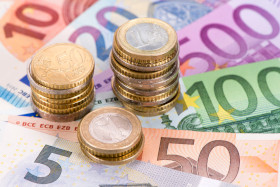The euro fell against the US dollar and was trading flat or lower versus other most-traded rivals. Market analysts thought that the euro’s weakness was mostly a result of the dollar’s strength as speculators continue to bet that US politicians will approve fiscal stimulus before the presidential election at the beginning of November. German macroeconomic data was worse than expected but did not have a material impact on the euro, though it may yet have a longer-term negative effect.
The GfK Consumer Climate showed a reading of -3.1 for November — a significant drop from October’s figure of -1.7. The report explained the sharp deterioration of the indicator by the increasing number of COVID-19 cases and the resulting tightening restrictions:
The rapid increase in infection rates is leading to a tightening of restrictions brought on by the pandemic. Fear of a second lockdown, should infections get out of control in the coming winter months, is also increasing. As a result, the in parts significant recovery we saw in consumer sentiment at the start of the summer has come to a standstill and is causing the consumer climate to plummet once more. An increase in propensity to save in October has also contributed to this.
Economic expectations demonstrated the biggest drop among sentiment indicators in October after five increases in a row caused by looser restrictions and economic recovery.
Going forward, the euro will be affected by Friday’s PMI releases and next week’s monetary policy meeting of the European Central Bank. Developments in the COVID-19 spread in Europe and abroad as well as news about US stimulus talks and the presidential election will also have likely a tremendous impact on the currency.
EUR/USD fell from 1.1858 to 1.1825 as of 11:25 GMT today. EUR/GBP traded at 0.9022 after opening at 0.9020 and rising to the daily high of 0.9047. EUR/JPY dropped from 124.04 to 123.76.
If you have any questions, comments, or opinions regarding the Euro, feel free to post them using the commentary form below.
